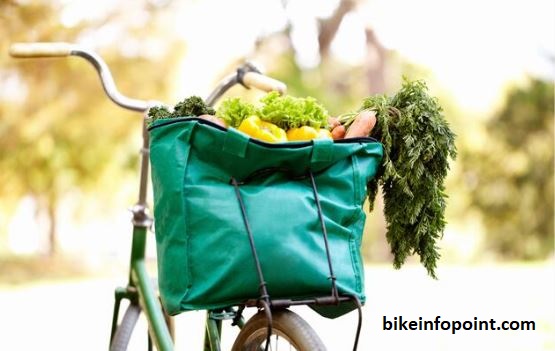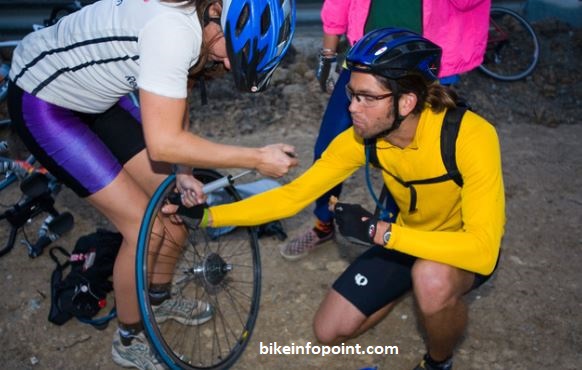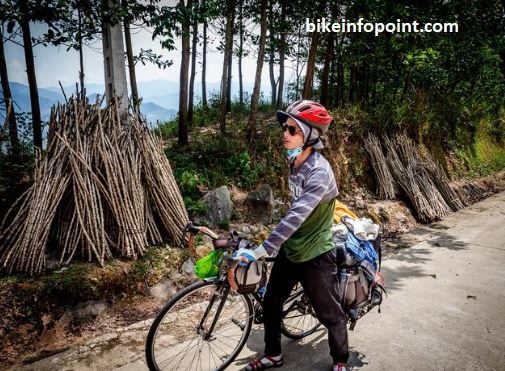
How to Carry Food on A Bike?
Importance of Carrying Food on a Bike: Biking is a great way to get exercise, enjoy the outdoors, and reduce your carbon footprint. However, if you’re going on a long ride, it’s important to have food and drinks to keep you fueled and hydrated. Carrying food on a bike allows you to take longer rides without having to worry about running out of energy, which is especially important in remote areas where food may not be readily available.
Having food readily available on a bike ride also helps maintain consistent energy levels and keeps the body fueled for maximum performance. This can help you to enjoy your ride more and extend the amount of time you can spend on your bike. Additionally, carrying food on a bike can reduce the need for frequent stops, making your ride smoother and more efficient.
Another advantage of carrying food on a bike is that it eliminates the need to carry it in your hands or pockets, freeing up your hands for riding and helping to distribute weight evenly. This also reduces the risk of spills and dropped items, making the ride safer and more enjoyable.
Table of Contents
TogglePreparation
A. Types of Food to Carry: When carrying food on a bike, it’s important to choose foods that are compact, lightweight, and easy to transport. Some great options include energy bars, dried fruit, trail mix, nuts, sandwiches, and fruit. Avoid carrying perishable items or foods that are messy or difficult to handle, as this can make the ride more difficult and unpleasant.
It’s also a good idea to have a mix of quick-release energy sources (such as energy bars or gels) and longer-lasting sources (such as sandwiches or fruit) to help sustain energy levels throughout the ride. It’s important to stay hydrated as well, so it’s a good idea to carry a water bottle or hydration system on the bike.
B. Choosing the Right Container or Bag: The right container or bag is crucial for carrying food on a bike. Look for containers that are durable, leak-proof, and easy to access while riding. Some popular options include bike-specific panniers, handlebar bags, and frame bags. Consider the type of food you’ll be carrying, the length of your ride, and the type of terrain you’ll be riding on when choosing a container or bag.
Types of Food Containers
A. Water Bottles: Water bottles are the simplest and most common method for carrying liquids while riding a bike. It can be attached to the frame or the handlebars using a cage or a holder. Water bottles come in different sizes and materials, with some being insulated to keep drinks cold for longer. The use of water bottles is recommended for short rides or when carrying a minimal amount of fluid.
B. Saddle Bags: Saddle bags are small bags that attach to the back of the bike’s saddle. It is ideal for carrying snacks, tools, and other small items. Saddle bags are typically made of durable materials and come with waterproofing features to protect the contents from the elements.
C. Handlebar Bags: Handlebar bags are small bags that attach to the handlebars of the bike, providing quick and easy access to food and other essentials. These bags are ideal for short rides and commuting as they offer convenient access to the contents. Handlebar bags come in different sizes and materials, and some even come with a waterproof cover to keep the contents dry in wet conditions. Handlebar bags can also be used to store maps, cell phones, or other small items that need quick access.
D. Frame Bags: Frame bags are bags that attach to the frame of the bike, usually between the top tube and the down tube. These bags are a great option for carrying larger items, such as food, clothes, or tools. Because it has more storage space compared to saddlebags or handlebar bags. Frame bags are made of durable materials and come with waterproofing features to protect the contents from the elements.
E. Panniers: Panniers are bags that attach to the sides of the bike’s rear rack. These are ideal for carrying larger items, such as groceries or camping gear, and are often used for longer rides and bike touring. Panniers come in different sizes and materials, and some models come with additional pockets and compartments for organizing gear. The use of panniers helps distribute the weight of the load evenly, which makes for a more comfortable ride.
F. Backpacks: Backpacks can also be used for carrying food and other essentials while riding a bike. Backpacks are a versatile option as they can be used for carrying items in addition to food, such as a laptop, change of clothes, or tools.
Considerations for Choosing the Right Container
Capacity: The first consideration when choosing a food container is its capacity. Consider the amount of food and drinks you need to carry, as well as the length of your ride. For shorter rides or for carrying a minimal amount of food, a small handlebar bag or saddle bag may be sufficient. For longer rides or for carrying a larger amount of food, a frame bag or pannier may be more appropriate.
Accessibility: Consider how easily you need to access the contents of your food container while riding. Handlebar bags and saddle bags offer quick and easy access to the contents, while frame bags and panniers can be more challenging to access while riding. Consider the items you need to carry and how often you will need to access them to determine the right type of container.
Durability: Consider the durability of the food container you choose, especially if you will be carrying food that is prone to spilling or crushing. Durable materials such as nylon or canvas, and waterproofing features such as zippers and seals, can help protect the contents from the elements and from damage.
Comfort: Comfort is an important consideration when choosing a food container for your bike. Consider the weight and size of the container and how it will affect the balance and handling of your bike. For longer rides, a well-designed and lightweight container that evenly distributes the weight of the load can help prevent fatigue and discomfort.
Tips for Securing Food Containers to the Bike
Use appropriate mounts: Using the correct mounts for your food container is important for securing it to the bike. Handlebar bags and saddle bags typically come with straps for attaching to the bike, while frame bags and panniers typically use hooks or clips. Make sure that the mounts you use are appropriate for your bike and the type of container you are using.
Secure the straps: When using straps to secure the container, make sure that they are tight enough to keep the container in place, but not so tight that they affect the handling of the bike. Check the straps regularly during the ride to make sure that they have not come loose or shifted.
Balance the load: Balancing the load of your food container is important for maintaining stability while riding. When using panniers or a backpack, try to distribute the weight evenly between the left and right sides. When using a handlebar bag or a saddle bag, try to keep the weight as close to the center of the bike as possible.
Use waterproofing: Using waterproofing features, such as waterproof covers or zippers, can help protect your food and other essentials from the elements. Consider using a waterproof container or covering your container with a waterproof cover to help keep the contents dry in wet conditions.
Conclusion
Carrying food on a bike is an important aspect of a successful and enjoyable ride. By considering safety, convenience, and proper hydration, and preparing for your food transport, you can ensure that you stay fueled and hydrated throughout your ride.


